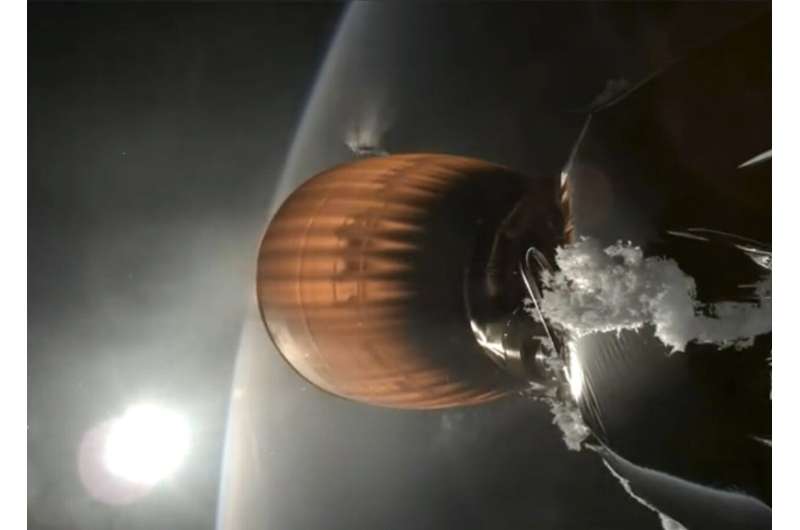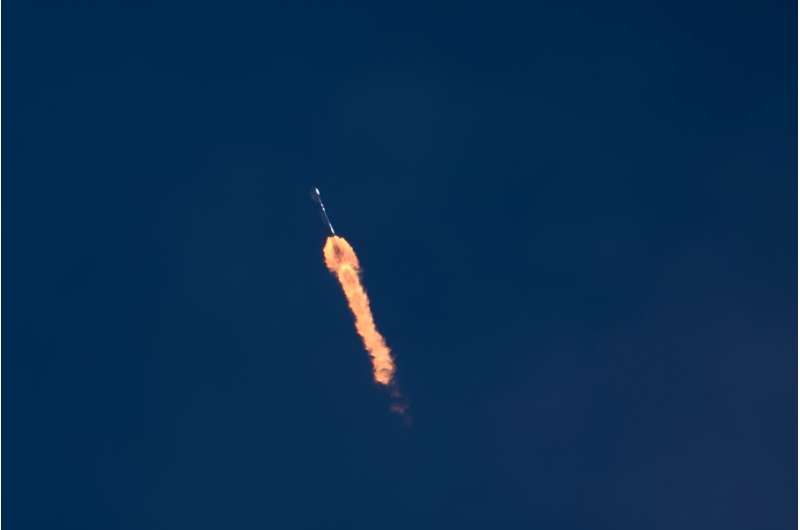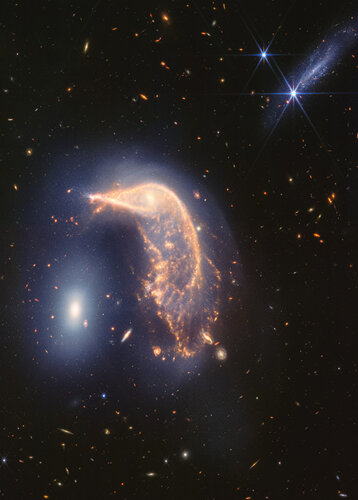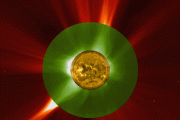
Copernical Team
NASA Introduces Low-Cost Hybrid Rocket Motor Testbed
 In June, engineers at NASA's Marshall Space Flight Center in Huntsville, Alabama, revealed a new 11-inch hybrid rocket motor testbed.
The innovative testbed features variable flow capability and a 20-second continuous burn duration, offering a cost-effective and quick-turnaround solution for conducting hot-fire tests on advanced nozzles, rocket engine hardware, composite materials, and pro
In June, engineers at NASA's Marshall Space Flight Center in Huntsville, Alabama, revealed a new 11-inch hybrid rocket motor testbed.
The innovative testbed features variable flow capability and a 20-second continuous burn duration, offering a cost-effective and quick-turnaround solution for conducting hot-fire tests on advanced nozzles, rocket engine hardware, composite materials, and pro Canadian space junk incident shows growing risks as SpaceX launches thousands of Starlinks
 In late April, farmers in Saskatchewan stumbled upon spacecraft fragments while preparing their fields for seeding. It sounds like the beginning of a science fiction movie, but this really happened, sending a powerful warning: it is only a matter of time before someone is seriously hurt or killed by falling space junk.
The Axiom Space private astronaut mission (Ax-3) concluded safely on Fe
In late April, farmers in Saskatchewan stumbled upon spacecraft fragments while preparing their fields for seeding. It sounds like the beginning of a science fiction movie, but this really happened, sending a powerful warning: it is only a matter of time before someone is seriously hurt or killed by falling space junk.
The Axiom Space private astronaut mission (Ax-3) concluded safely on Fe SpaceX rocket accident leaves company's Starlink satellites in wrong orbit

A SpaceX rocket has failed for the first time in nearly a decade, leaving the company's internet satellites in an orbit so low that they're doomed to fall through the atmosphere and burn up.
SpaceX Falcon 9 rocket experiences rare failure

SpaceX's highly reliable Falcon 9 rocket has experienced a rare failure that means the latest batch of the company's Starlink satellites won't make it into orbit, the company said Friday, as regulators opened an investigation.
The rocket, a prolific launch vehicle that propels both satellites and astronauts into orbit, blasted off from Vandenberg Space Force Base in California on Thursday night, with the first stage performing well and executing its impressive yet now routine droneship landing.
But the second stage developed a liquid oxygen leak, SpaceX said in a statement, leaving it unable to complete a planned second burn.
SpaceX space junk crashed onto Saskatchewan farmland, highlighting a potential impending disaster

In late April, farmers in Saskatchewan stumbled upon spacecraft fragments while preparing their fields for seeding. It sounds like the beginning of a science fiction movie, but this really happened, sending a powerful warning: it is only a matter of time before someone is seriously hurt or killed by falling space junk.
The Axiom Space private astronaut mission (Ax-3) concluded safely on Feb. 9 when its SpaceX Crew Dragon capsule splashed down off the coast of Florida. Several weeks later, the Crew Dragon's cargo trunk re-entered the atmosphere over Canada after being abandoned in orbit prior to the capsule's return.
Several incidents
The Federal Aviation Administration, charged with approving commercial spaceflight launches in the United States, has claimed that such trunks typically "burn up" during their re-entry.
This is clearly incorrect. Similar fragments, likely from the trunk of a different Crew Dragon mission, were found in North Carolina in May, including a smaller piece that landed on the roof of a house.
Week in images: 08-12 July 2024

Week in images: 08-12 July 2024
Discover our week through the lens
Ariane 6: Thank you Space Team Europe
 Video:
00:02:27
Video:
00:02:27
The first launch of Ariane 6 is a collective success for all of Europe. First flights are no easy thing, but Europe now has a heavy-lift rocket able to launch any mission into any orbit. From Earth observation satellites that monitor our changing climate, predict the weather and assist emergency responders during disasters; to communication and navigation systems that keep Europeans in touch and in the right place; to deep space telescopes and explorers expanding our understanding of the Universe and our place within it – Ariane 6 has restored Europe’s autonomous access to space.
“Thank you, not
Vivid Webb portrait of interacting galaxies Penguin and Egg

A duo of interacting galaxies known as Arp 142 commemorates the second science anniversary of the NASA/ESA/CSA James Webb Space Telescope.
Earth from Space: Hainan Strait
 Image:
The Copernicus Sentinel-2 mission takes us over the Hainan Strait in southern China.
Image:
The Copernicus Sentinel-2 mission takes us over the Hainan Strait in southern China. International Law Crucial in Preventing Space Militarization
 A recent study emphasizes the urgent need for countries and international organizations to leverage existing international law to address rising concerns about the militarization of outer space.
The militarization of space is escalating, with the potential to become a battleground. Nations are testing anti-satellite (ASAT) weapons, and satellites could become significant targets during con
A recent study emphasizes the urgent need for countries and international organizations to leverage existing international law to address rising concerns about the militarization of outer space.
The militarization of space is escalating, with the potential to become a battleground. Nations are testing anti-satellite (ASAT) weapons, and satellites could become significant targets during con 































